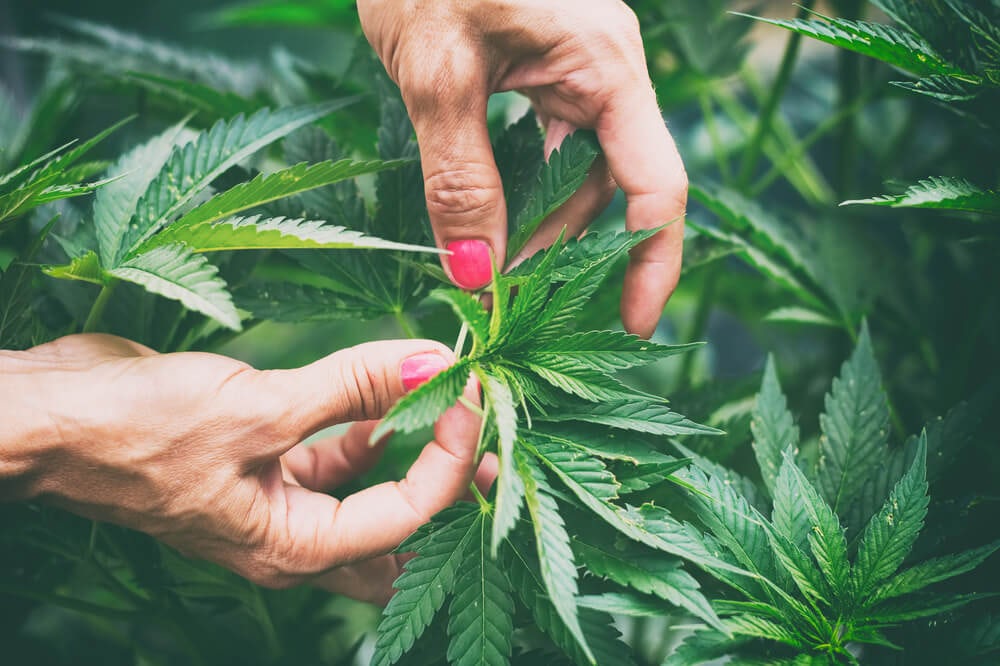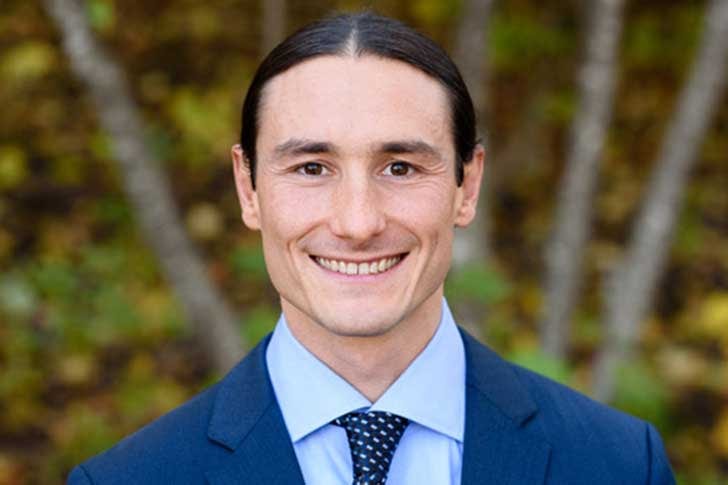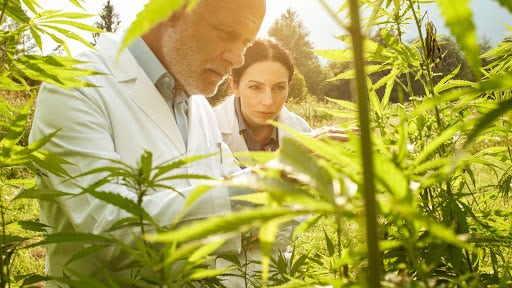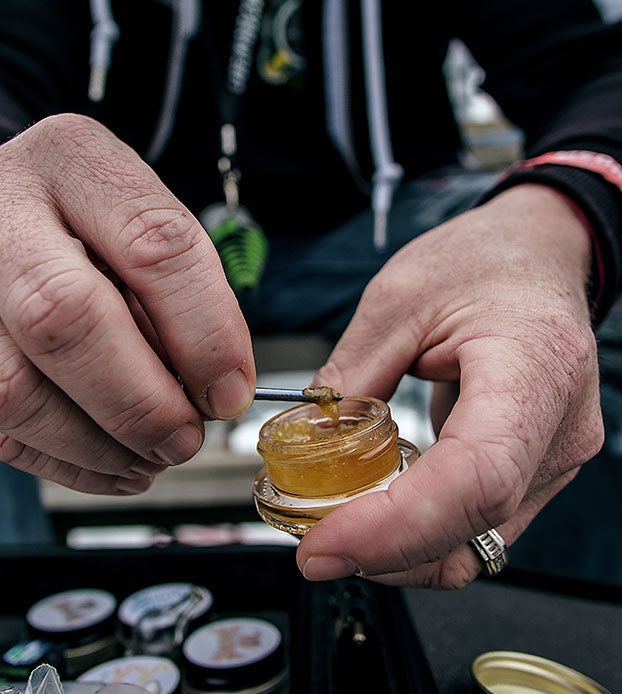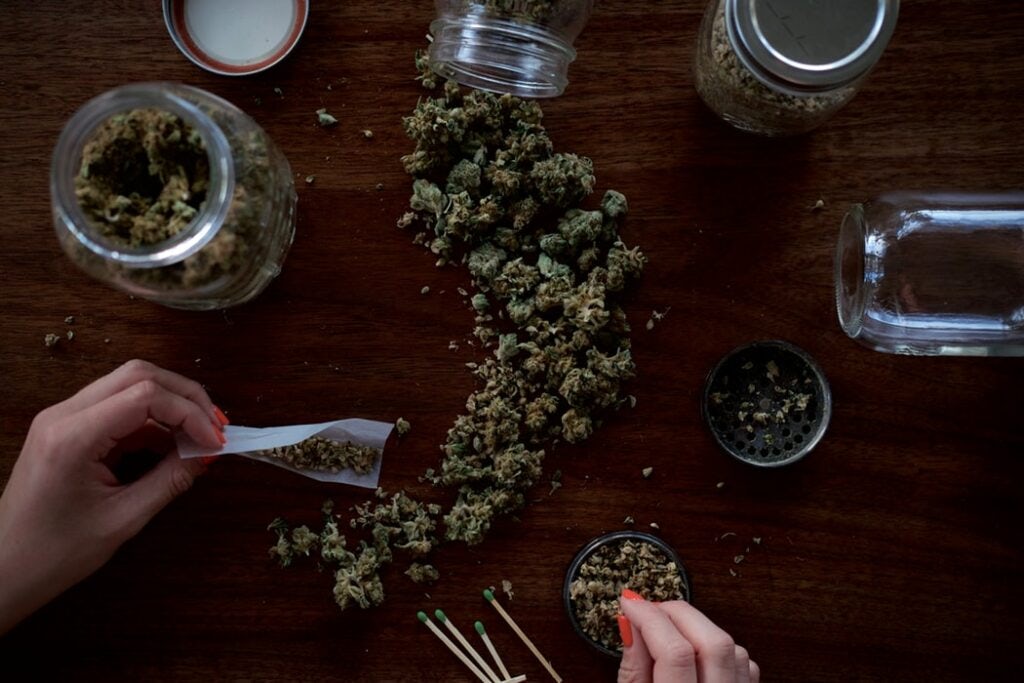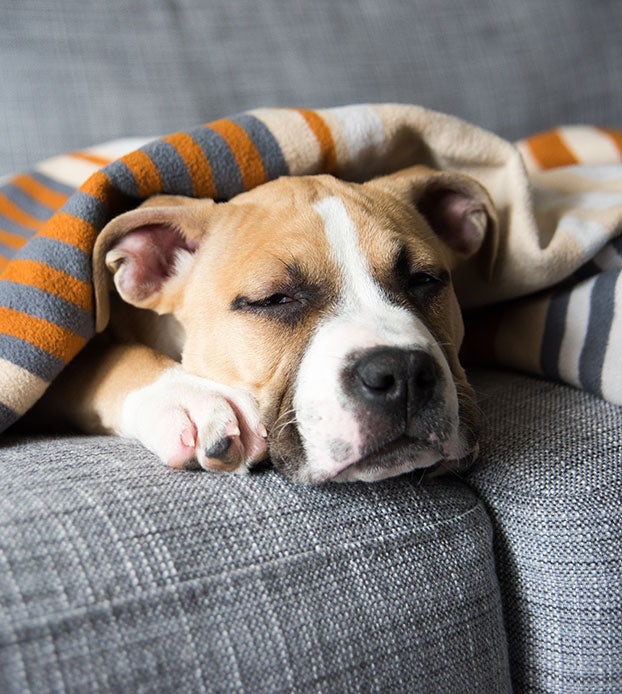Learning how to use non-impairing, hemp-based products such as CBD, CBDA and CBG can be confusing. With some products you may feel strong effects, some subtle, while others still produce nothing at all. Furthermore, most products don’t give you guidance on which one to take or how to find your optimal dosage, so you’re left wondering if CBD is overhyped.
Despite the learning curve, with the right knowledge, almost everyone can benefit from plant medicine. It comes down to several factors, including finding the right products and the right dosage.
In the US, cannabis plants that contain 0.3% THC or less are legally called hemp. Using hemp plants to enhance your endocannabinoid system can be incredibly healing for a wide range of conditions. So how can you ensure you’re using CBD correctly, and find out if CBDA and CBG may be better for your symptoms? First, you have to get beyond looking at cannabis as just THC and CBD.
CBD vs CBG vs CBDA
There are over 140 known cannabinoids in the cannabis plant, but only a handful are impairing. While THC dominates headlines, there are many cannabinoids with health benefits that won’t get you “high” or “intoxicated.” This article explores the benefits of three non-impairing cannabinoids: CBD, CBDA, and CBG.
– CBD
Short for: cannabidiol
One of the most well known cannabinoids in the cannabis plant, CBD has many documented benefits and seems to be best for minor aches and pains, improving mood, anxiety, concentration, nervousness and overall feeling of well being. One major challenge with CBD is that many people respond differently to different doses. Generally speaking, CBD is said to be stimulating at lower doses, and more sedating and relaxing at higher doses. What dose produces these effects is still up for debate and may even vary from individual to individual. CBD can also reduce the impairing effects of THC products, and may help alleviate associated grogginess, brain fog and lack of energy associated with THC. 1 2
– CBDA
Short for: cannabidiolic acid
CBDA is the unheated chemical precursor to CBD, and is the form that the plant itself produces. Some early research has shown that CBDA can absorb better than CBD when taken orally. 3
CBDA seems to work even better and at lower amounts than CBD for pain and inflammation from physical activity, sleeplessness from aches, and discomfort and worry. It has also been found to have potent anti-nausea effects, though these findings are mainly from animal studies. 4 5 6
– CBG
Short for: cannabigerol
Often called the mother cannabinoid, all other cannabinoids come from CBGA. CBG, the decarboxylated or neutral form of CBGA, is now available because new varieties of cannabis produce high levels of this once rare cannabinoid. 7
CBG is being studied for many benefits, including:
- Relaxation and help with sleeplessness 8
- Relieving nerve pain such as shooting, stinging and stabbing pain 9
- Easing the physical feelings of nervousness such as the “fight or flight” sensation, tenseness, restlessness, fidgeting, sweating and trembling 10 11
- Focus and attention 12
- Digestive health benefits, including appetite stimulation13
Wait, I’m confused – what’s the difference between CBD vs CBDA?
In the raw cannabis plant, acidic cannabinoids such as CBDA are more common than their “neutral” forms such as CBD. That’s because the cannabis plant actually only makes cannabinoids in the acidic form. 14
Acidic cannabinoids (CBDA) change to their neutral forms (CBD) by undergoing decarboxylation, a chemical process. Decarboxylation can happen with heat or time, and it occurs during the smoking process every time you light up.
Researchers are now discovering that CBDA has different properties from CBD and that CBDA absorbs better and therefore requires lower doses.
→ Learn more about CBD vs CBDA
So, what’s the difference between CBD vs CBG?
CBG has certain properties in common with CBD and CBDA, for example it is non-impairing and can aid with physical and mental ailments, like CBD and CBDA.
Early indicators suggest that CBG is more relaxing and soothing; more effective for nerve aches and discomfort not addressed by CBD or CBDA, more potent at lower dosages, and is unlikely to diminish the effects of THC. 15
Identifying quality hemp products
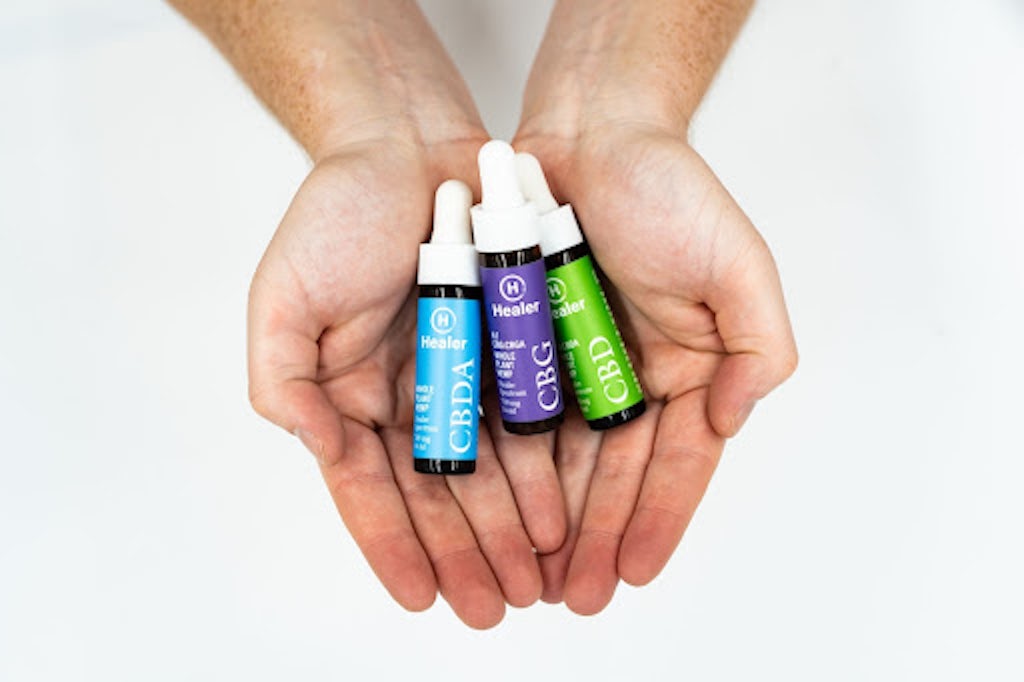
Without a set of standardized testing regulations for CBD, there are a lot of misleading or downright bad products on the market. But if you know what you’re looking for, it’s easier to find quality products.
Types of cannabis products
First, it’s important to understand how your tincture, oil, capsule, edible or topical products are made. Cannabinoids can be extracted from the plant in different ways, and the method used to extract can either preserve or destroy the plant’s most beneficial compounds such as acidic cannabinoids, minor cannabinoids, terpenes, flavonoids and other phytonutrients. There are three main types of cannabis products made from extracts:
– Isolate
In an isolate product, specific cannabinoids are isolated from all the other beneficial compounds. Isolates are the closest thing to a pure chemical, up to 99.9% pure and devoid of any other cannabinoids and terpenes.
– Broad spectrum
Broad spectrum cannabis oil products contain some of the naturally occurring compounds from the hemp plant, except for THC which is removed.
– Full spectrum
Full spectrum products are made from plant material, and preserve as many cannabinoids and other compounds like terpenes as possible. Look for products that have high levels of acidic cannabinoids (CBDA and CBGA), 5+ minor cannabinoids and original plant terpenes. Low levels of THC are common in full spectrum hemp products. Importantly, this term is not well defined and can be used broadly as a marketing tool.
Other tips for finding quality cannabis products
- When looking for CBD, CBG, and CBDA products, look for products with clear and easy-to-understand labels. The label should tell you the amount of cannabinoids per serving and per package, and ideally tell you the extraction method as well.
- Read the ingredients to ensure there aren’t needless preservatives or fillers in your product. The best products have a short ingredient list, with no generic terms like natural flavors, and as a general rule only contain ingredients that one can pronounce.
- Additionally, quality hemp products always come with a certificate of analysis (COA), a lab result that verifies the contents of your cannabis products. With such a prevalence of mislabeled products on the market, it’s vital your cannabis products come with a COA.
How to best use hemp products and find your optimal dosage
Incorporating more cannabinoids into your daily and weekly regimen is easy with a little effort.
What works best for you is personal, and may take some trial and error. Your endocannabinoid system is unique, so the cannabis routine you need is also unique!
- Find your preferred formula and extraction method. Most people do best with full-spectrum, but some may require a broad-spectrum or isolate product if they cannot have small amounts of THC.
- Test different cannabinoids and ratios. If you have tried CBD with little success or you should consider other products high in other cannabinoids like CBDA and CBG individually, to see how you react and benefit from each. Different cannabinoids will produce different effects, and you may prefer them for specific times of day.
- Follow a dosage protocol. Renowned cannabis clinician Dr. Dusin Sulak recommends starting with 5 mgs of CBD, CBDA or CBG 1-2 times per day. Then increase by 5 mg to find the dose where you notice an effect. For example on Day 1-2 try 5 mg, Day 2-3 10 mg, and Day 3-4 15 mg. Dr. Sulak recommends checking in before and 60-90 minutes after a dose to determine effects.
- Don’t be afraid to go all the way. Finding your optimal dosage can take some time. Keep increasing your dosage by ~5 mg every 1-2 days until you feel the desired effect.
- Increase your absorption of the cannabinoids by eating a healthy fat: Eating a healthy meal that contains some healthy fats before using cannabinoids will increase the absorption by up to 2-5x. Try healthy fats such as olive oil, avocado, coconut oil and even flaxseed oil to help increase absorption. Many people notice more benefits while using less cannabinoids when taken alongside a nutritious meal. 16
- Use different cannabinoids throughout the day to cultivate different effects. While a CBD tincture may help you feel focused and alert during the day, a CBDA tincture will help with aches and discomforts, and a CBG tincture can help you settle in at night to fall asleep and stay asleep more easily.
- Move your body. Exercise can also stimulate the endocannabinoid system, while your cannabis products such as CBDA can help reduce post-workout inflammation and aid your recovery. Just make sure your exercise is fun and voluntary, not forced and unpleasant. 17
Healer products are high quality and effective
Using cannabis can be healing. With doctor-formulated products from Healer, you know you’re getting high quality ingredients and effective formulas. To take the guesswork out of getting the best results, Healer products include a clinically validated Usage Guide & Response Tracker.
Healer’s patented nano-filtration extraction process sets a new standard for purity while maintaining the plant’s valuable components. Healer products contain a more complex full spectrum (the Healer Spectrum) of cannabinoids including their acidic precursors, minor cannabinoids, terpenes and other valuable whole plant components. All products are lab tested, non impairing, organically farmed, and formulated with vegan ingredients so you get all the benefits you need with nothing extra you don’t.
Oil Drops

For control and precise dosing of oils, the Healer Oil Drops are formulated so 1 drop ≈ 1 mg of cannabinoids. Choose from three cannabinoid blends to create the custom cannabis routine that serves your health goals. Every formulation is a whole plant spectrum extraction that includes a range of cannabinoids and terpenes.
– CBD oil drops, with 6:1 CBD:CBDA
– CBG oil drops, with 6:1 CBG:CBGA
– CBDA Oil Drops
Not sure which to start with? Get the oil bundle and save 30% on all three drops to find what works best for you.
Topical Cream
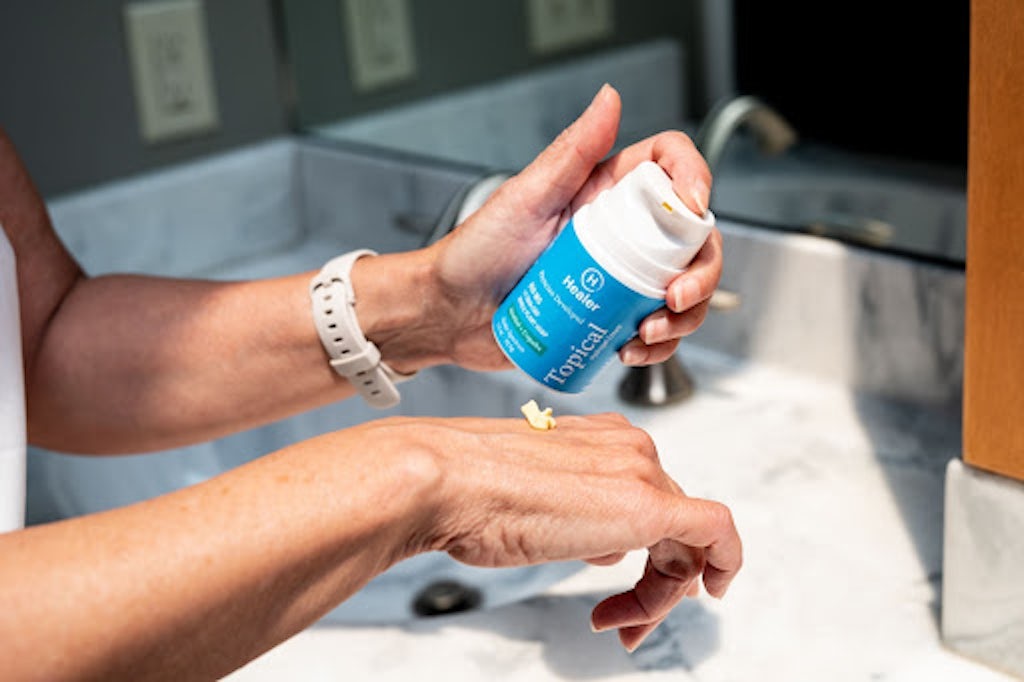
Quickly relieve discomfort, aches, and pain and inflammation from physical activity with the application of Healer CBDA topical cream. A non-greasy, fast-acting and light hydrogel, this cream absorbs quickly to activate your endocannabinoid receptors with 850 mg of blended CBDA and CBD. Copaiba, menthol, limonene and other terpenes speed the relief process. Each pump contains 20 mg of total cannabinoids.
Capsules

Not a fan of taking oils? Each capsule contains the same cannabinoid blend as the CBD and CBDA oil drops, with a slower onset and longer last effect throughout the day – and no oily taste. Each bottle comes with 30 vegan, non-leaking capsules designed for increased absorption.
– CBD capsules, with 6:1 CBD:CBDA
– CBDA capsules
This article was sponsored by Healer, and all scientific references were reviewed by Dr. Codi Peterson. The Cannigma has not evaluated the products mentioned, nor does promotion equal endorsement or recommendation.
Sources
- Murillo-Rodríguez E, Sarro-Ramírez A, Sánchez D, et al. Potential effects of cannabidiol as a wake-promoting agent. Curr Neuropharmacol. 2014;12(3):269-272. doi:10.2174/1570159X11666131204235805
- Millar SA, Stone NL, Bellman ZD, Yates AS, England TJ, O’Sullivan SE. A systematic review of cannabidiol dosing in clinical populations. Br J Clin Pharmacol. 2019;85(9):1888-1900. doi:10.1111/bcp.14038
- Formato M, Crescente G, Scognamiglio M, et al. (‒)-Cannabidiolic Acid, a Still Overlooked Bioactive Compound: An Introductory Review and Preliminary Research. Molecules. 2020;25(11):2638. Published 2020 Jun 5. doi:10.3390/molecules25112638
- Mlost J, Bryk M, Starowicz K. Cannabidiol for Pain Treatment: Focus on Pharmacology and Mechanism of Action. Int J Mol Sci. 2020;21(22):8870. Published 2020 Nov 23. doi:10.3390/ijms21228870
- Rock, E.M., Sullivan, M.T., Collins, S.A. et al. Evaluation of repeated or acute treatment with cannabidiol (CBD), cannabidiolic acid (CBDA) or CBDA methyl ester (HU-580) on nausea and/or vomiting in rats and shrews. Psychopharmacology 237, 2621–2631 (2020). https://doi.org/10.1007/s00213-020-05559-z
- Bolognini D, Rock EM, Cluny NL, et al. Cannabidiolic acid prevents vomiting in Suncus murinus and nausea-induced behaviour in rats by enhancing 5-HT1A receptor activation. Br J Pharmacol. 2013;168(6):1456-1470. doi:10.1111/bph.12043
- Nachnani R, Raup-Konsavage WM, Vrana KE. The Pharmacological Case for Cannabigerol. J Pharmacol Exp Ther. 2021;376(2):204-212. doi:10.1124/jpet.120.000340
- https://clinicaltrials.gov/ct2/show/NCT05088018
- Ghovanloo MR, Estacion M, Higerd-Rusli GP, Zhao P, Dib-Hajj S, Waxman SG. Inhibition of sodium conductance by cannabigerol contributes to a reduction of dorsal root ganglion neuron excitability [published online ahead of print, 2022 Mar 16]. Br J Pharmacol. 2022;10.1111/bph.15833. doi:10.1111/bph.15833
- https://www.clinicaltrials.gov/ct2/show/NCT05257044
- Zhou C, Assareh N, Arnold JC. The Cannabis Constituent Cannabigerol Does Not Disrupt Fear Memory Processes or Stress-Induced Anxiety in Mice [published online ahead of print, 2021 Jun 28]. Cannabis Cannabinoid Res. 2021;10.1089/can.2021.0027. doi:10.1089/can.2021.0027
- Nachnani R, Raup-Konsavage WM, Vrana KE. The Pharmacological Case for Cannabigerol. J Pharmacol Exp Ther. 2021;376(2):204-212. doi:10.1124/jpet.120.000340
- https://clinicaltrials.gov/ct2/show/NCT04859296
- Tahir MN, Shahbazi F, Rondeau-Gagné S, Trant JF. The biosynthesis of the cannabinoids. J Cannabis Res. 2021;3(1):7. Published 2021 Mar 15. doi:10.1186/s42238-021-00062-4
- Banerjee SP, Snyder SH, Mechoulam R. Cannabinoids: influence on neurotransmitter uptake in rat brain synaptosomes. J Pharmacol Exp Ther. 1975;194(1):74-81.
- Millar SA, Stone NL, Yates AS, O’Sullivan SE. A Systematic Review on the Pharmacokinetics of Cannabidiol in Humans. Front Pharmacol. 2018;9:1365. Published 2018 Nov 26. doi:10.3389/fphar.2018.01365
- Charytoniuk T, Zywno H, Konstantynowicz-Nowicka K, Berk K, Bzdega W, Chabowski A. Can Physical Activity Support the Endocannabinoid System in the Preventive and Therapeutic Approach to Neurological Disorders?. Int J Mol Sci. 2020;21(12):4221. Published 2020 Jun 13. doi:10.3390/ijms21124221
Sign up for bi-weekly updates, packed full of cannabis education, recipes, and tips. Your inbox will love it.

 Shop
Shop Support
Support

